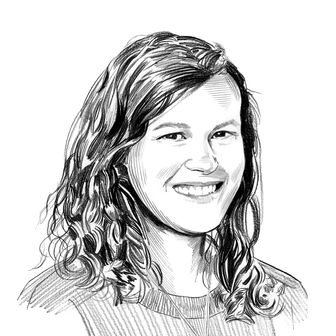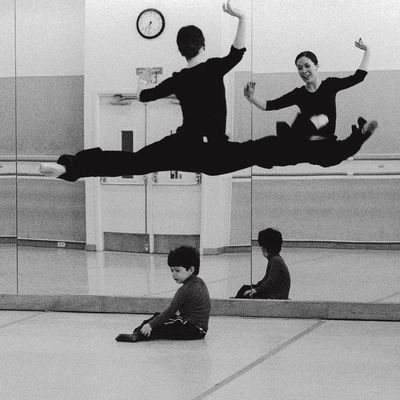
For the past 14 years, photographer Lucy Gray has been documenting the lives of three principal dancers at the San Francisco Ballet: Kristin Long, Tina LeBlanc, and Katia Waldo. As professional ballerinas, all three women made a choice that, in their field, was considered bold and unusual: They decided to have kids. For many dancers, the peak of their careers coincides with their childbearing years — and women are often discouraged from becoming mothers; some choose not to out of fear that they will lose their jobs if they become pregnant. A new book, Balancing Acts, features Gray’s photographs of Long, LeBlanc, Waldo, and their families through pregnancies, births, rehearsals, and performances, along with interviews about their experiences raising kids and the ways that becoming mothers affected their dancing. Gray spoke with the Cut about why dancers are discouraged from having kids, how the project helped her overcome her own stereotypes about ballerinas, and how having kids actually made all of these three women better at their jobs.
How did you decide that you wanted to photograph ballerinas?
When I became a photographer, which was not until I was 30, I was very interested in photographing working mothers. When I was 10, my father left us, and my mother got her first job. I watched her work and support five children, and I deeply admired her. She really sensitized me to working mothers, and made me a feminist.
I have no background in dance, and in fact, before I started this project I actually was prejudiced against ballerinas. I felt that they were starving themselves so that a man — the director — could tell them what to do. I had the idea that they needed to be drama queens, or be in a deep, dark place to get to their art — which I really don’t believe in. So it was random that I started photographing dancers. One day I was with my son and his friend in the market, and his friend knew this extraordinary-looking woman. She was very thin and pale, and she looked sort of like a ghost. She was holding her three-day-old-baby, and she was luminous. When I got home, I found out she was Katia Waldo, a prima ballerina at the San Francisco Ballet. I didn’t know anything about dance, but I knew that I wanted to photograph her.
I wrote up a proposal for the project, and signed contracts with three dancers and their husbands. It was very formal, which was good, because they’re performers. They’re extremely dedicated and professional, and they’re used to being photographed. They know how to perform for a camera, which is fantastic photographically. They knew how to get my attention, which is great, because it meant that we were participating together — having a conversation. If they had completely ignored me, which is what most non-professionals do, the pictures wouldn’t have been as good or as honest.
What are the factors that make it so unusual for professional ballerinas to have kids?
Many ballerinas are afraid to have kids, and the directors don’t encourage it. It’s extremely difficult. They’re risking their careers by making such a big change to their physical existence, because they express their creativity visually. If something happens to their bodies, they can lose their job. They’re expected to look like girls: flat-chested, so thin that they don’t menstruate. They’re not supposed to have women’s bodies.
Generally speaking, prima ballerinas start dancing when they are around 3. By the time that they are 11, they know that’s what they want to do with their life, and by 15, they’re doing it. So by the time they’re 25, 30, that’s all they know how to do. It’s who they are. It’s their identity, their success, what they contribute to the world. In many cases, these women are the breadwinners in their families — so if they lose their jobs, then what? If the director gets tired of you, he can just drop you from the company, and your living is gone. These dancers were all at the peaks of their careers when they decided to have kids. That takes guts.
In the book you write that all three women improved as dancers after having kids.
It’s counterintuitive. We’re all told that we should concentrate on one thing and get better at it. But here are women who are doing two things — dancing and parenting — who are better at both. You never, ever hear that. When I started, I thought that the story would be how difficult it was for these women to be ballerinas and mothers — how impossible it was. But they got better reviews after having kids. Kristin Long had been a soloist at San Francisco Ballet, and when she came back from maternity leave, she was made a principal. Katia used to have stage fright, but she got over it after she had her child — and then she had so much more fun dancing. I think you take yourself more seriously once you have a child. It forces you to see the big picture. They were all more relaxed after having kids. They found it easier to be onstage, and it made their dancing better. It’s easier, it flows better, there’s more charm to it.
Obviously, I’m not proselytizing for having children, but it’s nice to see that you can do it and you can still be successful, since many women are going to have children. We need to stop talking about how hard and impossible it is to be a working mother, and help mothers make it work. Workplaces should recognize that women with kids can actually perform better.
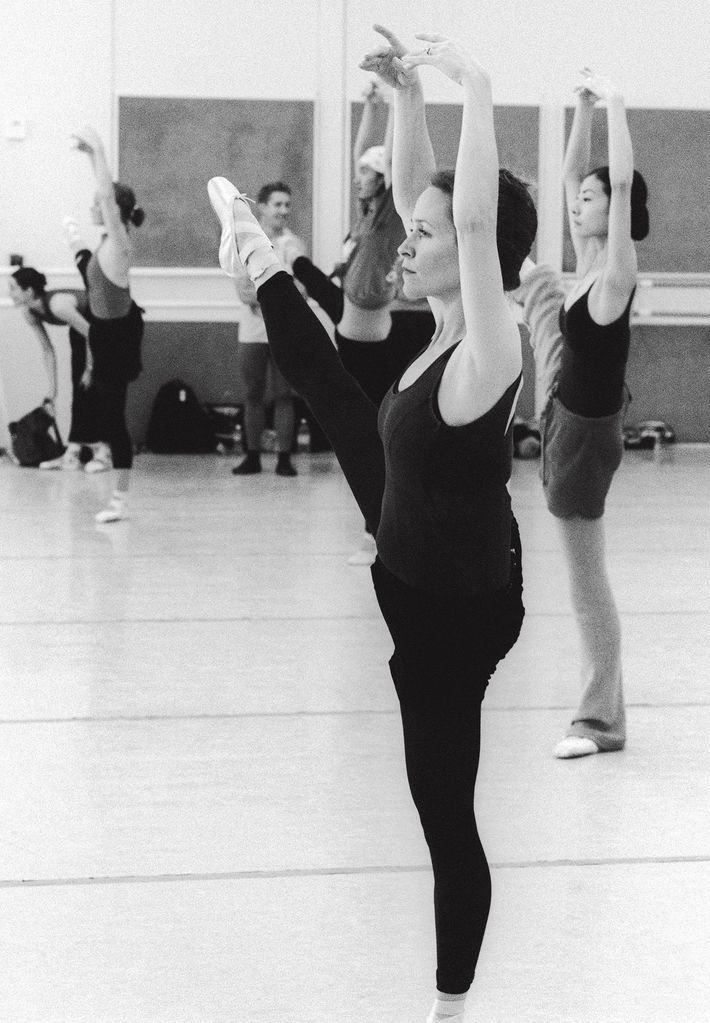
2002
Tina LeBlanc in class while three months pregnant.
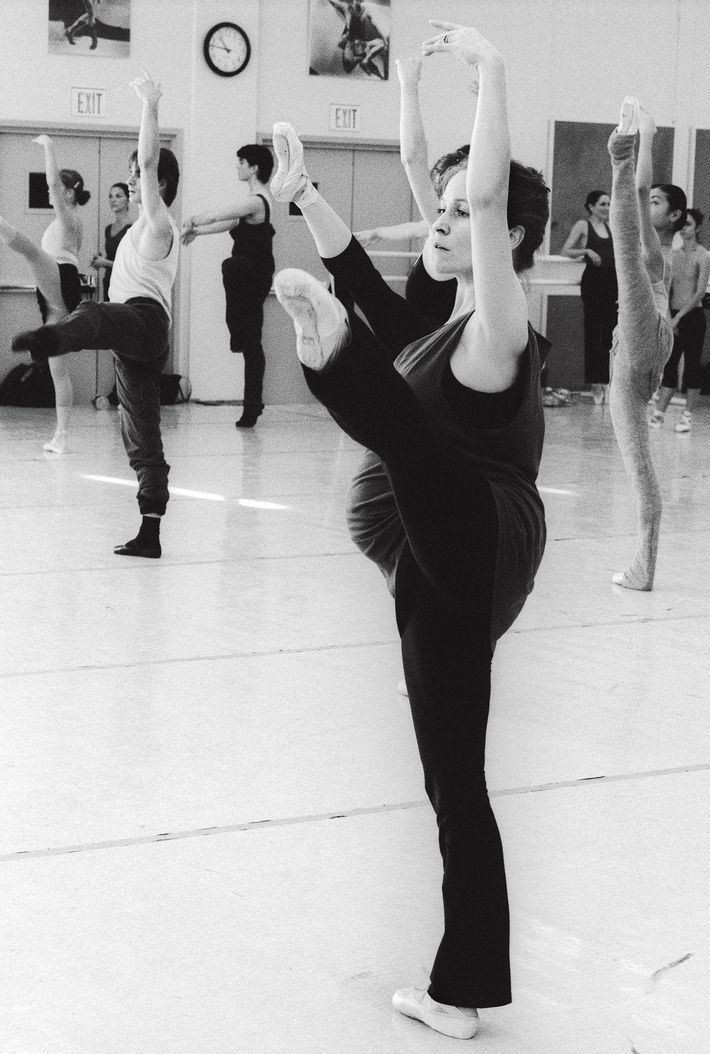
2003
Tina LeBlanc in class while eight months pregnant.
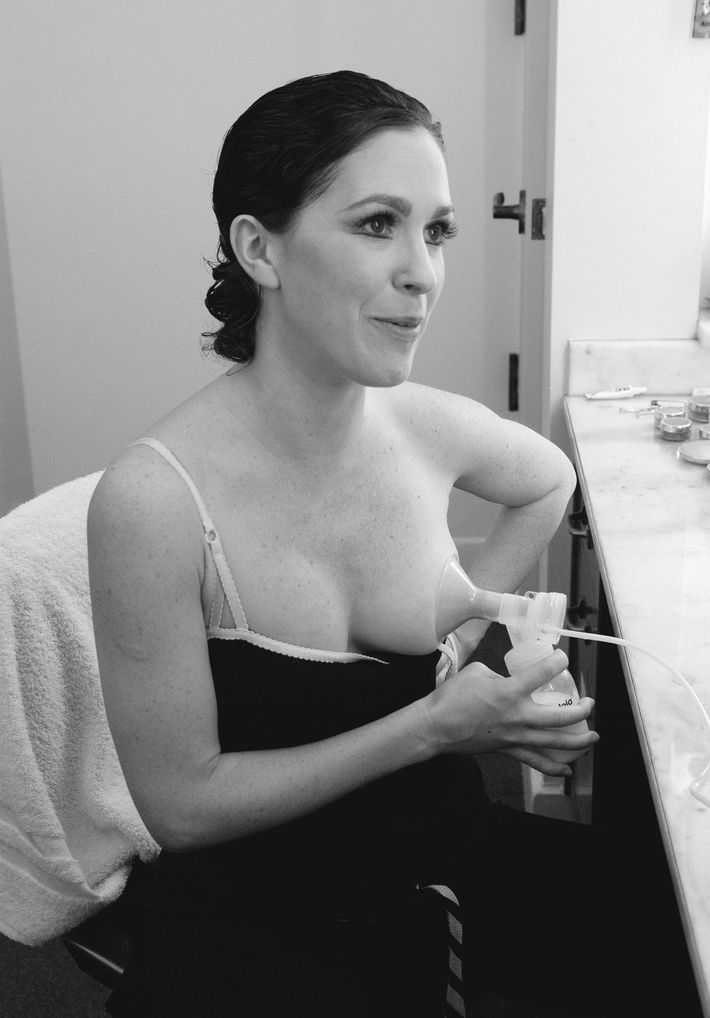
2009
Kristin Long backstage before a performance.
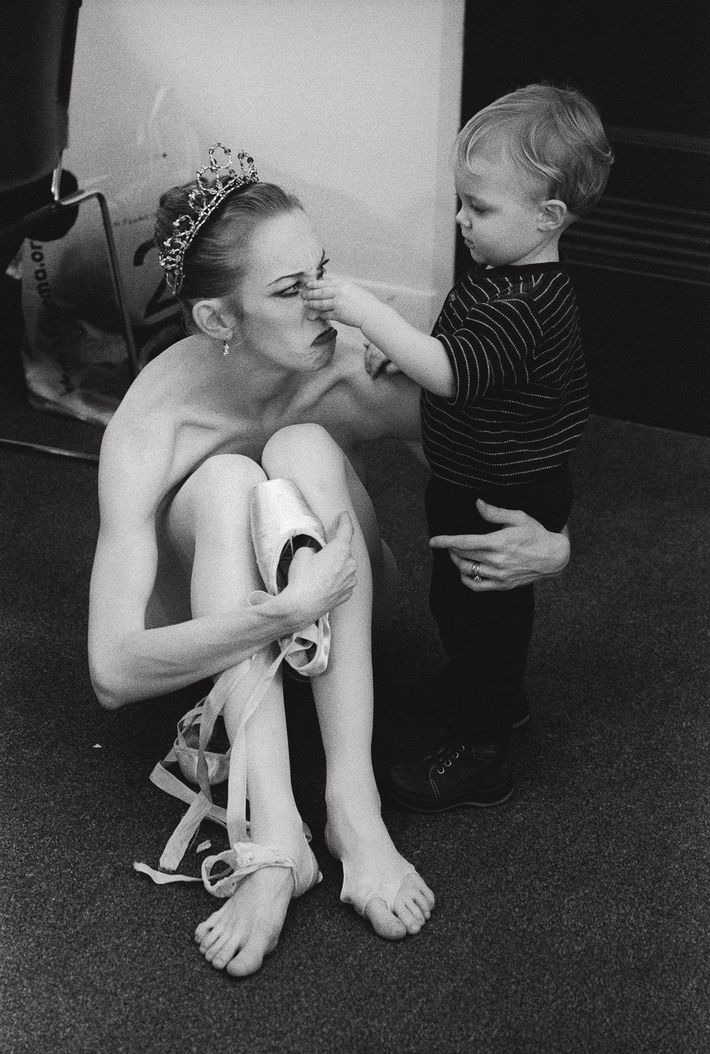
2001
Katia Waldo in the dressing room with her son, James, after a performance of The Nutcracker.
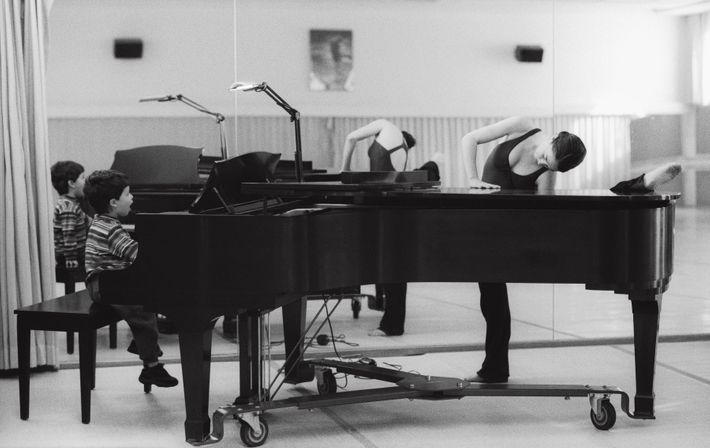
2000
Kristin Long at rehearsal with her son, Kai.
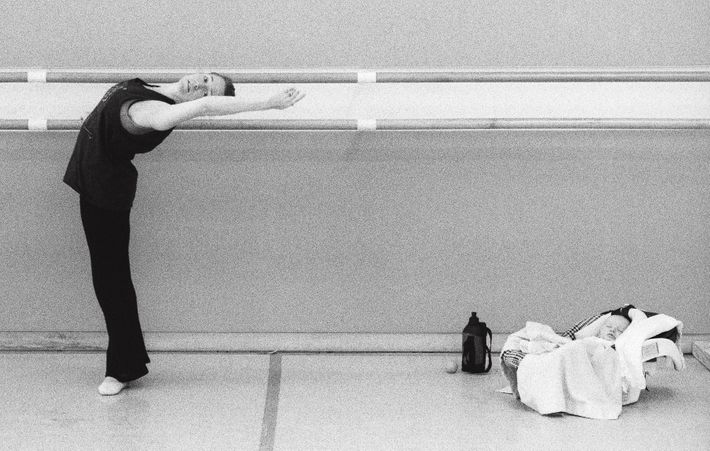
2003
Tina LeBlanc warming up in the studio with her son, Sasha.
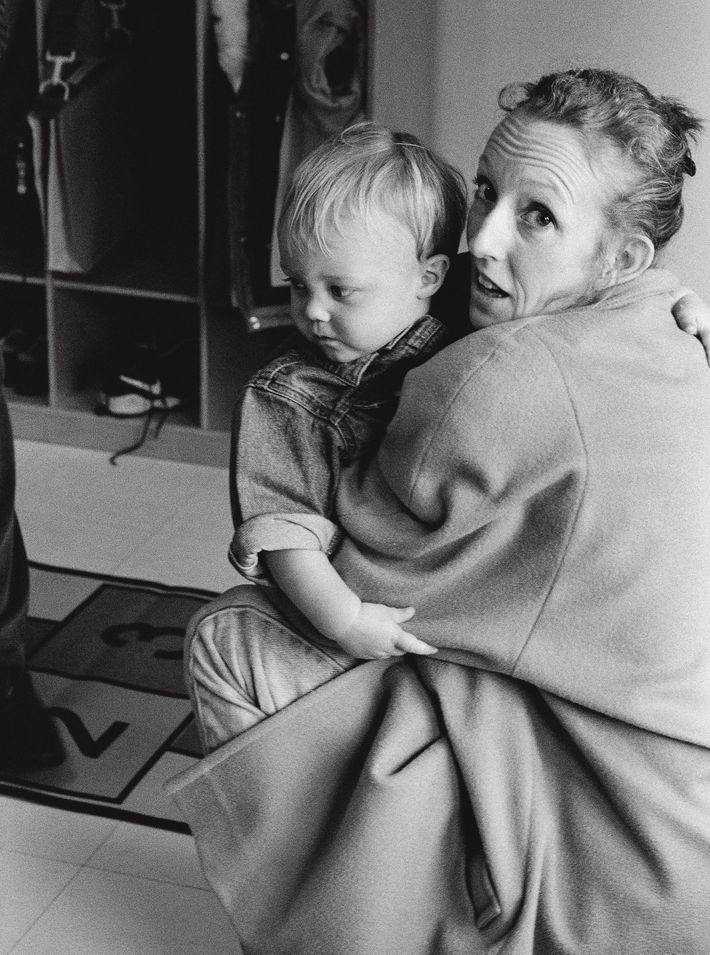
2002
Katia Waldo in the dressing room with her son, James.
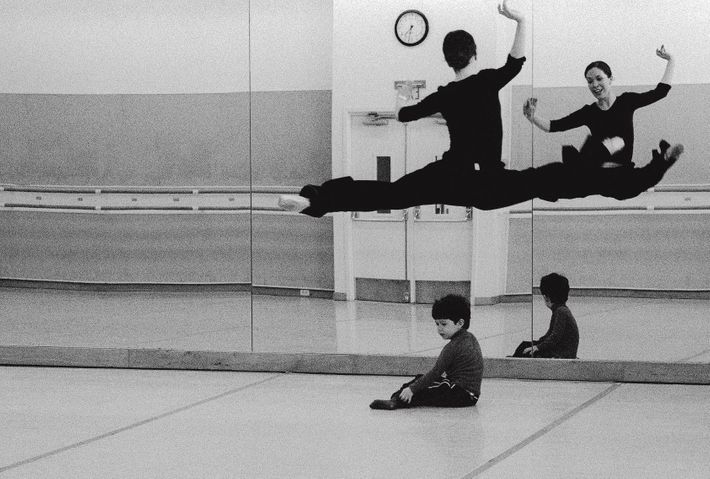
2000
Kristin Long at rehearsal with her son, Kai.
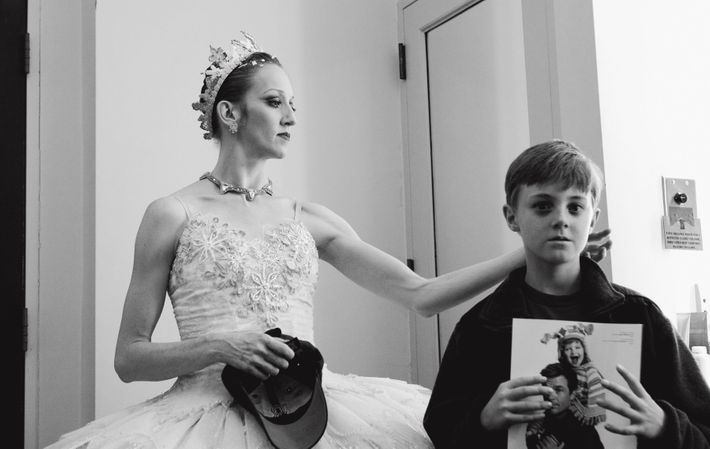
2007
Katia Waldo and her son, James, backstage after a performance of The Nutcracker.
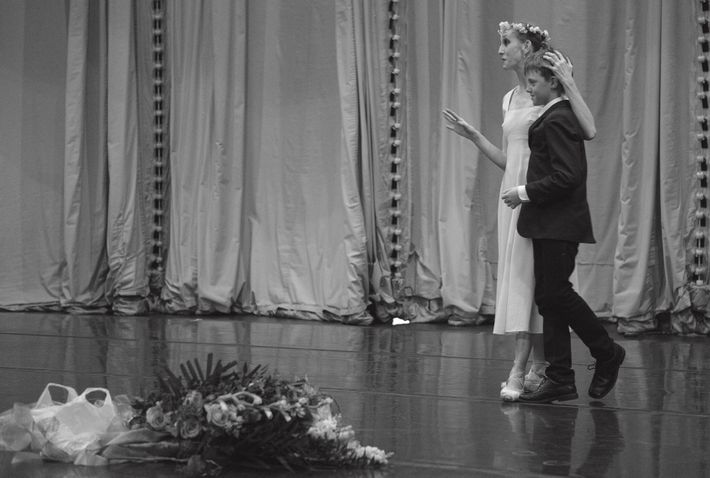
2010
Katia Waldo and her son, James, after her final performance with the San Francisco Ballet.


